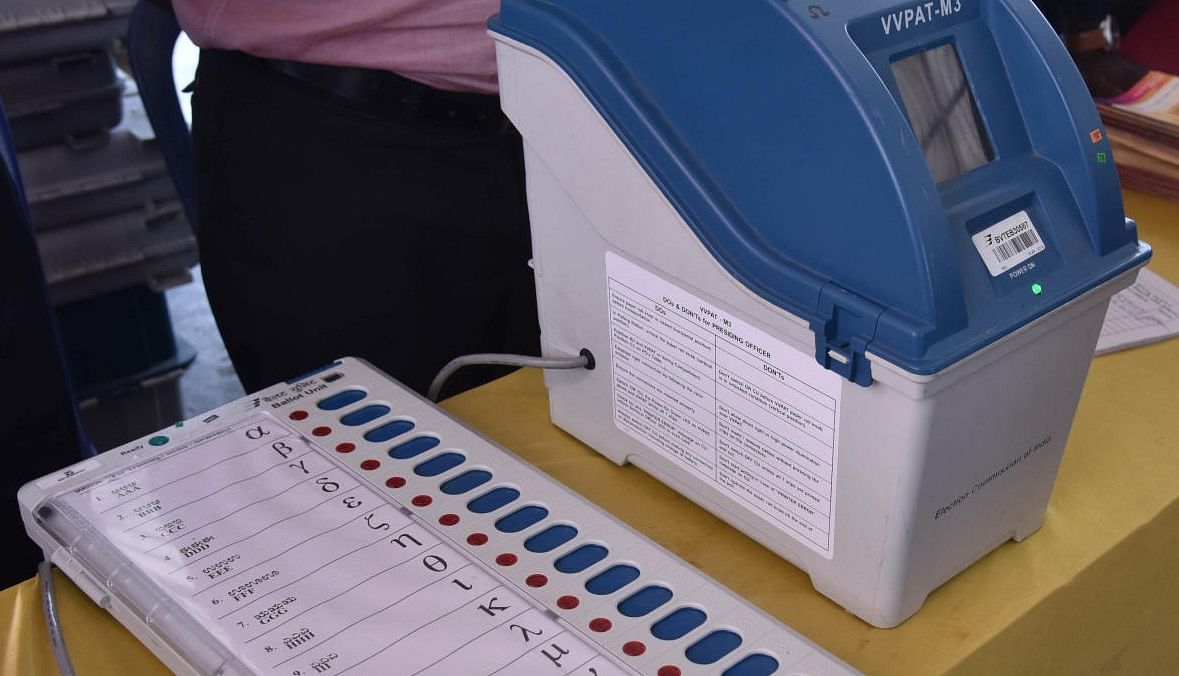
A representative image of an EVM with VVPAT.
Credit: DH File Photo
Jammu and Kashmir is having its first Assembly elections in almost 10 years. The state is having polling in three phases with the first phase over on Wednesday (September 18).
The State recorded a 61 per cent voter turnout across 24 constituencies in seven districts in phase one which concluded peacefully.
The remaining two phases will be held on September 25 and October 1 with the results set to to be announced on October 8.
These elections are significant for the Valley as they are the first since since the removal of Article 370 in August 2019, which stripped the region of its special status. This also marks the first assembly elections for Jammu and Kashmir as a Union Territory.
It goes without saying that Electronic Voting Machines (EVMs) and Voter Verifiable Paper Audit Trails (VVPATs) are being used to conduct elections.
How it works
An EVM is a device that allows voters to caste their votes using electronic means. According to the ECI, it assists in or oversees the casting and counting of votes. An EVM is made of two parts: the control unit and the balloting unit.
Voters can use the VVPAT machine to verify if their votes were cast as intended by using a verification technique. A VVPAT prints a paper slip with the name, party symbol, and serial number of the candidate a voter selects. Election fraud and malfunctions are intended to be identified by VVPATs.
To ensure safety and transparency, the ECI has advised officials to match data from EVMs and VVPATs.
What happens if they do not match
Should there be a disparity between the data on VVPATs and EVMs, the polling station's specific paper slips are re-examined. The count determined by the VVPAT paper slips takes precedence over the vote count recorded on the EVMs if the disparity continues.